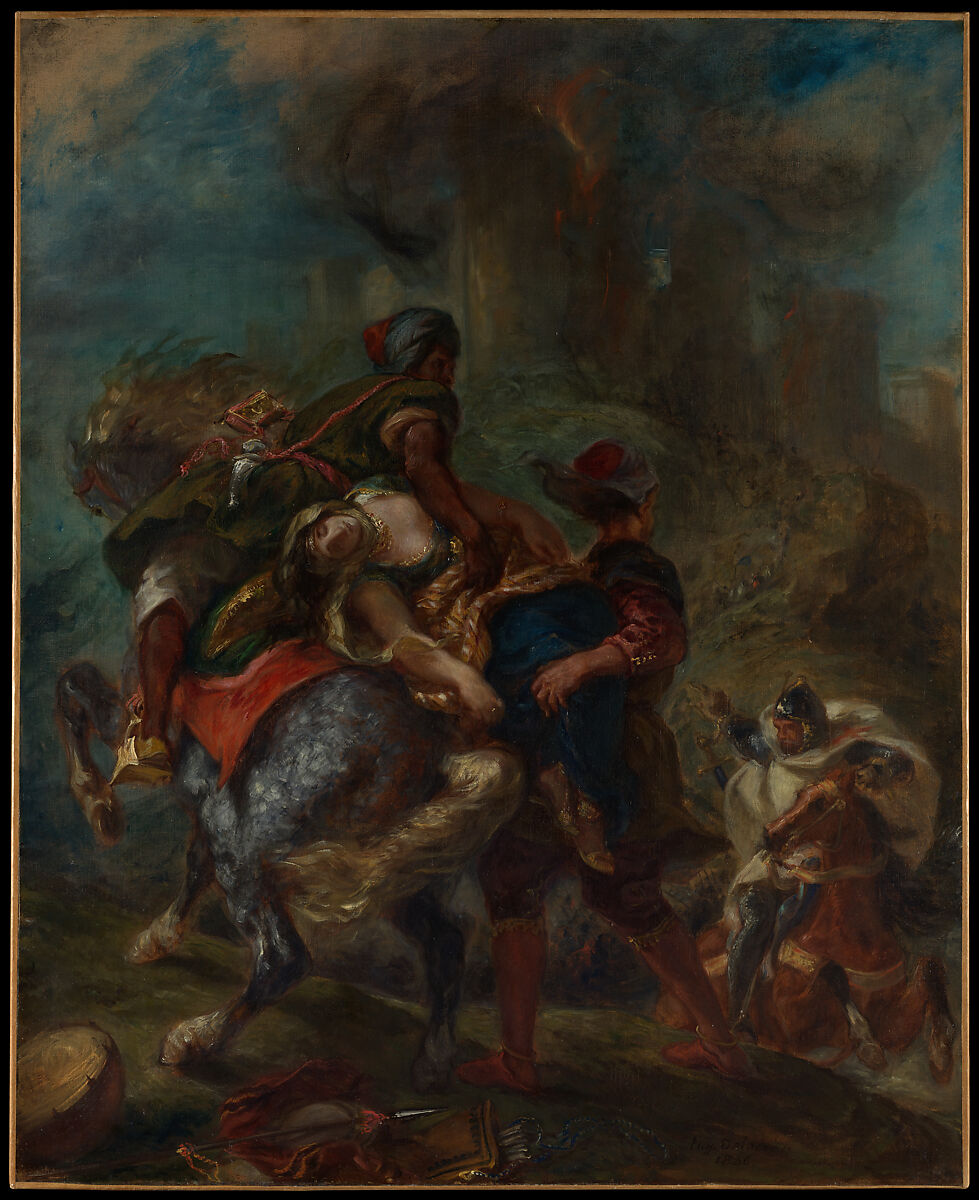The Romantic Era took place in the 19th century and consisted of a large range of creative freedoms and unique styles. Going into the 1800's, Europe was turning a corner and seeing unparalleled diversity and technology, making it no surprise that art also grew in diversity and began to draw from a larger base of influences. Some popular influences of the Romantic era are human behaviors, emotions, and experiences. At this point, the majority of art in this style has separated from religious influences that were characteristics of earlier artistic eras; and instead turned towards the human experience. I focused on paintings that came from France during this era so that it can be better observed how different artists approached portraying the world when faced with similar social, economic, political, and religious influences.
Romanticism
Romanticism was characterized by its sense for the dramatic. Romanticism liked to represent the world through an extreme lens. It was heavily focused on engaging the viewer with the emotional aspects of human existence and nature.
Stormy Coast Scene after a Shipwreck, French painter (unknown), ca. 1825
Stormy Coast Scene after a Shipwreck focuses on dramatic situation. It depicts people coming ashore after a shipwreck during a raging storm. There are some people coming ashore by their own means, one person being carried unconscious (or possibly dead) to the shore, and one person clinging to the rocks as the water threatens to pull them under. It shows the range of circumstance and would entice the viewer to think about their own circumstances and contemplate the reality of human suffering. Romanticism aimed to inflict feelings in the viewer over surface-level understanding. "
In French and British painting of the late eighteenth and early nineteenth centuries, the recurrence of images of shipwrecks and other representations of man’s struggle against the awesome power of nature [manifested]" (Galitz). I am drawn to the contrast between the steady rocks and the unsteady, thrashing waves. I would consider something like this if I was to own art for myself.
The Abduction of Rebecca by Eugene Delacroix, France, 1846
The Abduction of Rebecca was painted by Eugene Delacroix in 1846 France. According to the Met Museum, "This painting depicts a scene from
Ivanhoe: the Jewish heroine Rebecca, who had been confined in the castle of Front de Boeuf (seen in flames), is carried off by two enslaved Muslim warriors commanded by the covetous Christian knight Bois-Guilbert" (
Metmuseum.org). This painting has lots going on within it that creates a sense of chaos. There is a castle on fire and a sense of urgency portrayed with the Muslim warriors. Delacroix may have intended to paint this scene in a way that fosters a sense of justice for the rescuing of Rebecca and highlights that heroism requires more than just a brave face. It's also noteworthy that this piece was based off of a book by a French author, Sir Walter Scott (
Metmuseum.org). Once again, in the style of Romanticism, the painting captures the emotions of such a theatrical scene.
Realism
Unlike Romanticism, Realism was focused on portraying life as it is, without exaggerated elements. It's portrayals were more on daily life (especially that of the middle class). Some themes included farming, regular social activities, and chores. Realism was a vastly different approach as Romanticism to depicting human experience, and the two were often in strong opposition of each other (
Kljaich).
A Bar at the Folies-Burgere by Edouard Manet, France, 1882
Folies-Burgere was a very popular music hall and entertainment venue in Paris that had opened around 10 years prior to this painting. It was well established and well known (
Courtauld). The woman shown is the bartender and a mirror is behind her, where you can see she is talking to a man. She appears to be almost zoned-out or at least uninterested in the conversation being had. This reflects what can be assumed to be her everyday shift at work. There is nothing abnormal or theatrical occurring. The painting simply reflects everyday life. Despite this painting being completed almost 150 years ago, I can still relate to this painting; I too, stare into the abyss during a really boring night at work.
Rue Transnonain, le 15 Avril 1834 by Honoré Daumier, France, 1834
Rue Transnonain, le 15 Avril 1834 was an artistic commentary on the massacre that occurred in 1834 in response to Parisian protest. Creating this piece would have been considered dangerous for the artist because of its challenge against the government. It also was a challenge to the artist for how to best show the events of the Massacre in a way that would sit best with the viewer (
Dr. McCoy). This piece stood out to me because it depicts a terrible, yet realistic and still scene. If this work was to be done in the style of Romanticism, it would have depicted the Massacre itself taking place in its full drama, rather than the still and realistic depiction of the after-effects. I feel that this is more effective because as Dr. McCoy mentions, it allows the viewer to sit with the "stillness and silence of death" (
Dr. McCoy).
Sources cited:







I personally prefer romanticism because of the deep emotions it stirs. The dramatic nature of it allows me to connect with the artwork on a more personal level.
ReplyDeleteIn your analysis, I really appreciated how you pointed out that romanticism is truly centered on drama. These create a feeling I often find missing in realism pieces, which focus more on everyday life. I also appreciate how romantic artists aimed to inspire and challenge their viewers. It captures both beauty and struggle. Thank you for sharing! I really enjoyed your post!